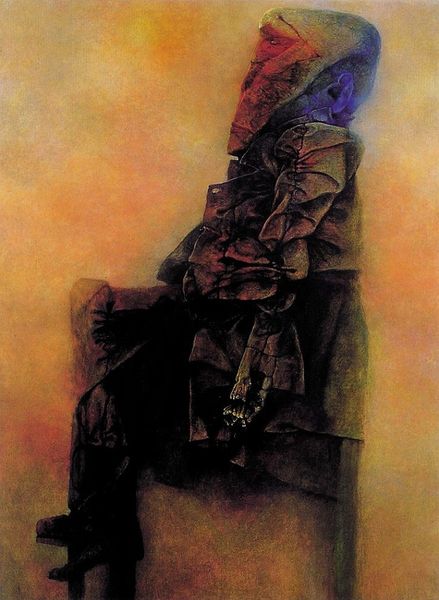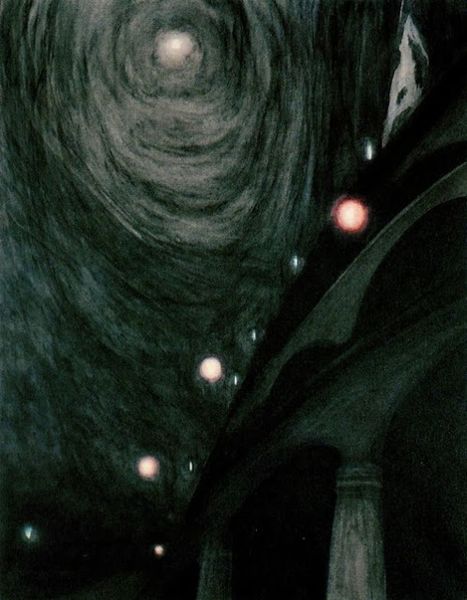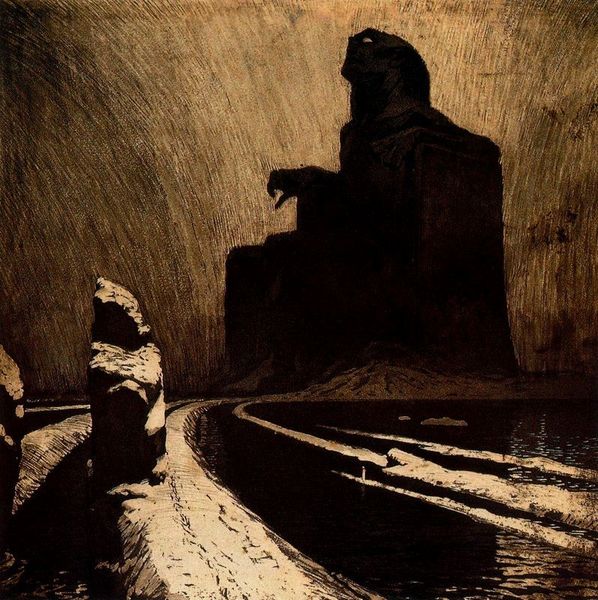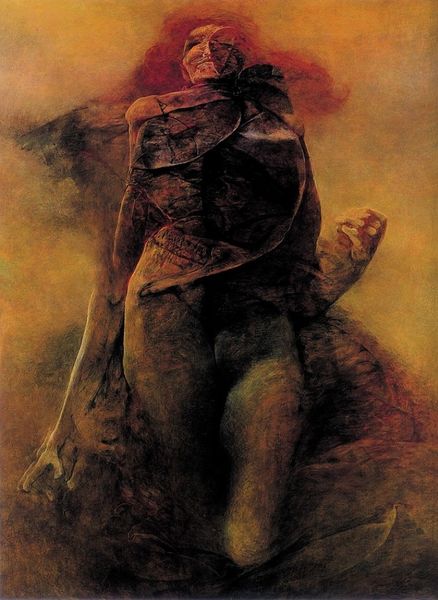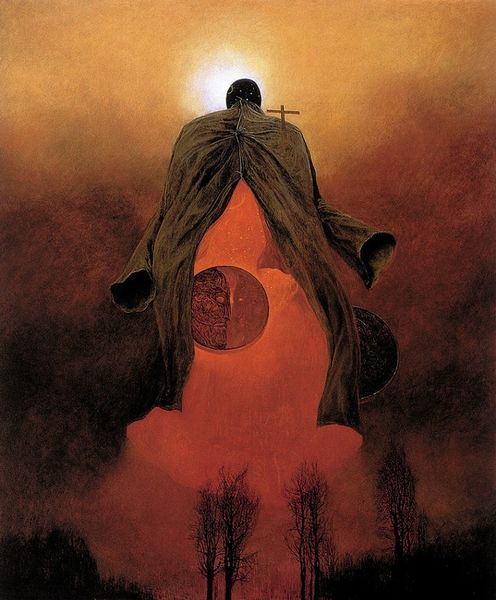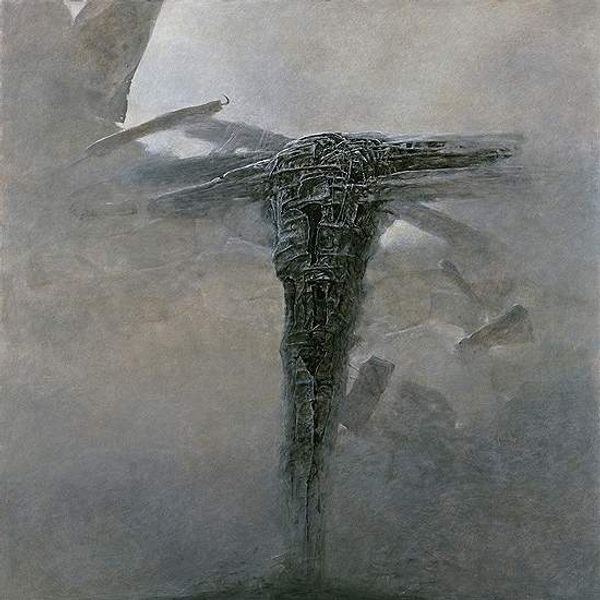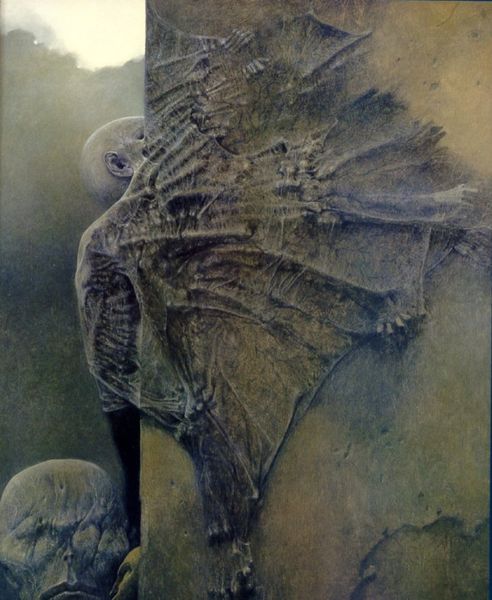
Dimensions: 122 x 98 cm
Copyright: © The Historical Museum in Sanok (Poland) is the exclusive owner of copyrights of Zdzisław Beksiński's works.
Curator: I am immediately struck by the overwhelming darkness, a feeling of enclosure, almost claustrophobia. It feels barren, heavy. Editor: This compellingly bleak "Untitled" artwork from 1972 is by Zdzislaw Beksinski. Executed in oil paint, the piece exemplifies his signature dystopian surrealism, born from a turbulent socio-political landscape in Soviet-era Poland. Curator: The very materiality seems to amplify the painting's inherent darkness. Looking at it, the deep shadows hint at a brutal process, almost carved into existence. It really plays on the weight of creating within a system that oppresses artistic freedom. Editor: Absolutely, we can examine the figures towering in the background and consider that their forms may allude to themes of control, the oppressive figures of authority bearing down, shaping not only the landscape, but individual human fate. How fascinating, as well, that in the face of this bleakness there remains the tiny figure at the base of the image holding some sort of small, but luminous, light. Curator: The narrative resonates with the artist’s experiences. It invites us to delve into the political context of the Eastern Bloc at the time, and how artists used fantastical, allegorical means to make implicit criticisms of totalitarianism and celebrate, sometimes simply acknowledge, individual resilience. There is such potent narrative here. The question becomes how those landscapes shape individuals and collectives, creating legacies that are material as much as psychological. Editor: Considering his methods, one also senses that he uses materials not merely to depict the world, but to re-create it, reflecting his anxiety through layers of visible materiality. Beksinski creates an unnerving space to express very palpable emotions: his art is less representation, more an act of material resistance. Curator: Yes, it's impossible to extract this art from its place and time. The themes explored—repression, memory, and identity—are etched in layers. The small, illuminating flame really punctuates those readings and serves to remind us to not forget what it is like to feel small against powerful authoritarian forces. Editor: Reflecting on Beksinski's painting, one truly gains appreciation for art's capacity to transmute the unbearable into visible expression, and also the value of how this labor of creating objects of resistance helps solidify memories for future generations.
Comments
No comments
Be the first to comment and join the conversation on the ultimate creative platform.
